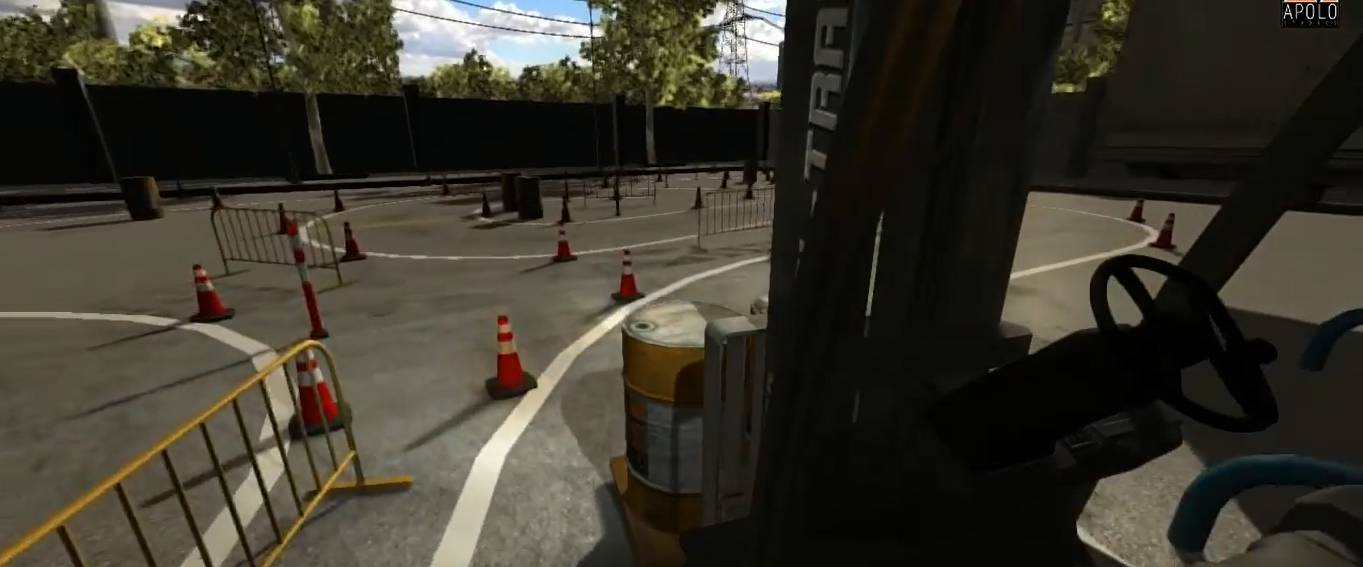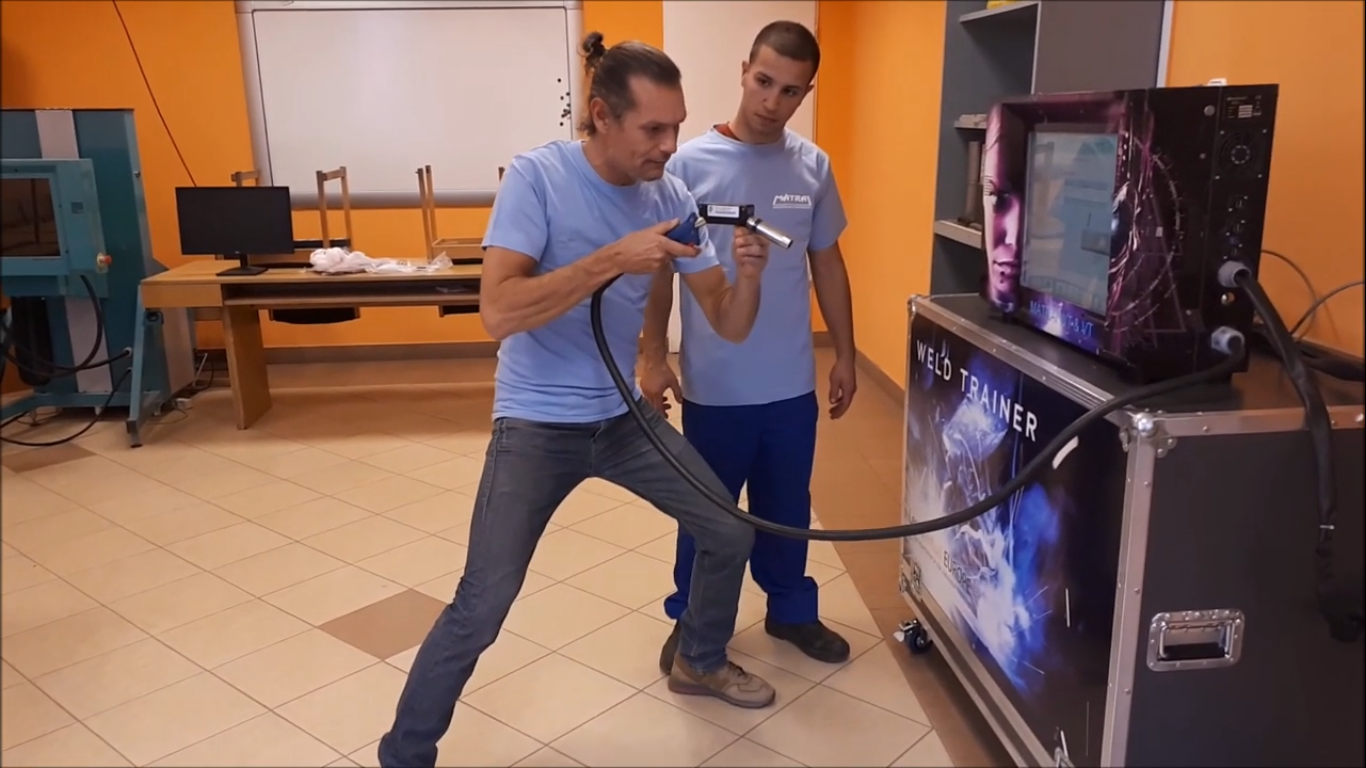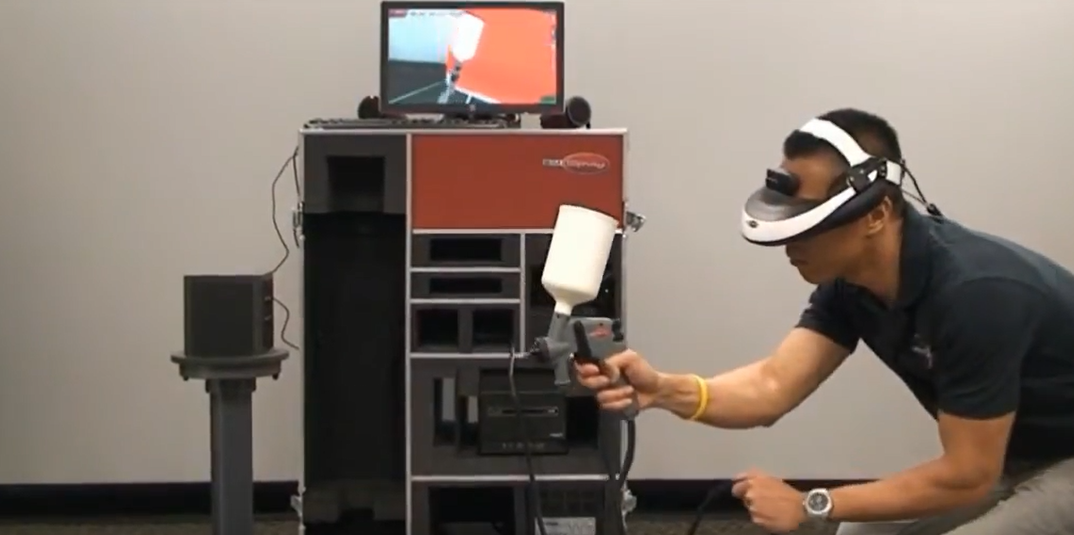Benefits of Digital Reality
What are the advantages of the digital reality in vocational education? Teaching new things? Doing the same quicker, deeper and for more students? Or doing the same as before but cheaper? Or just reducing the risk of accidents or health threatening actions? Or all of them together? Can we measure effectiveness? In this chapter we gathered the most important advantages. Do not forget however, none of the virtual reality tools can substitute real tools. They can complement reality but very seldom substitute them.
 Source: Learn Virtual Europe
Source: Learn Virtual Europe
Customised and detailed progress
When learning skills it is difficult to see the mistakes so there is a great chance of loosing the right track and loose motivation. Simulations and other types of immersive learning allows trainees to have immediate feedback on their exercises and can correct their habits and keep motivation up. Based on training track records teachers can fully customise and adjust the training to the trainees pace and skill level. High standard vendors in DR market provide analysis platforms for the DR tools to discover strengths and weaknesses to help trainees. Unexplored bad routines pulls down company performance and cause extra costs in terms of resources.
Covering full spectrum
Most of the immersive solutions can cover the full spectrum of a skill. In welding for example the VR tools are capable to simulate consumable electrodes welding and TIG welding or other types. The applications have dedicated training materials for health and safety, machine adjustments, different materials, different joint types and all of the positions for left and right hands. Some of the tools are capable for all types of training, some are specialized for motor movement in a specific skill.
 The teacher shows the right body position on a motor tracking system Source: Learn Virtual Europe
The teacher shows the right body position on a motor tracking system Source: Learn Virtual Europe
Another aspect is covering the spectrum of activities. Immersive solutions are not only used in trainings. They are used in application tests, marketing events too. With a tower crane simulations for example the company can filter the ones who have strong agoraphobia without sending them up to the tower. With a simulator 10 people can be tested in one hour. With a real tower crane the test is about 5 hours for ten persons.
Savings with higher effectiveness
The most visible savings is the material costs. In traditional welding a trainee welds a few hundred meters with at least one ton of steel a year. With a simulator a trainee can weld a few kilometers with zero tons of steel a year. In car painting huge amount of money can be saved by not using paints, filters, booths, clothes and chemicals. No waste times, no health risks.
 Source: Learn Virtual Europe
Source: Learn Virtual Europe
There are hidden savings too. Cost reduction can be made by allocating only one teacher for a larger group. If the teacher can generate automated feedbacks for each student without constantly standing behind them that is a saving.
Costs of the tools are high at the beginning but afterwards the trainings can be repeated as many times as you want. There are pricing plans in the market offering lifetime zero fees for upgrades and favourable licences for schools.
VR tools are getting cheaper and more common. As the VR solutions spread, their prices will go down.
Motivation by gamification
Digital reality is a specific approach that allows your trainees to be part of the play instead of observing it. The gamified context of the immersive solutions rises motivation. The trainee repeats the exercise not because she is told to, but she wants to meet the criteria or wants to improve. Like in a game where the player is driven by curiosity and desire to win.
 Source: Freepik
Source: Freepik
Save time
Training time is significantly reduced by using immersive tools because there are no technological delays such as paint drying, no need to put on masks and clothes, no sanding off paints and no sanding off the surplus on steel. Time savings can be hours. A trainee and his teacher can save hours by not traveling to the forest to navigate in the wood with a tractor. An employment bureau can save days using forklift simulators to filter applicants instead of hiring a subcontractor with forklifts and halls.